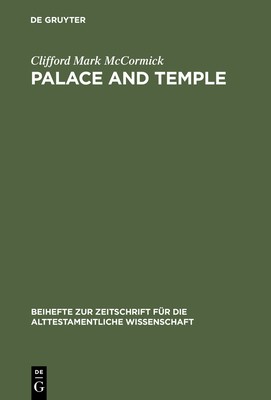
- We will send in 10–14 business days.
- Author: Clifford Mark McCormick
- Publisher: De Gruyter
- Year: 2001
- Pages: 231
- ISBN-10: 3110172771
- ISBN-13: 9783110172775
- Format: 15.9 x 23.4 x 1.8 cm, hardcover
- Language: English
- SAVE -10% with code: EXTRA
Reviews
Description
This book is a critical study of the role played by architecture and texts in promoting political and religious ideologies in the ancient world.
It explains a palace as an element in royal propaganda seeking to influence social concepts about kingship, and a text about a temple as influencing social concepts about the relationship between God and human beings.
Applying the methods of analysis developed in built environment studies, the author interprets the palace and temple building programs of Sennacherib, King of Assyria, and Solomon, King of Israel. The physical evidence for the palace and the verbal evidence for the temple are explained as presenting communicative icons intended to influence contemporary political and religious concepts. The volume concludes with innovative interpretations of the contributions of architectural and verbal icons to religious and political reform.
EXTRA 10 % discount with code: EXTRA
The promotion ends in 15d.22:23:31
The discount code is valid when purchasing from 10 €. Discounts do not stack.
- Author: Clifford Mark McCormick
- Publisher: De Gruyter
- Year: 2001
- Pages: 231
- ISBN-10: 3110172771
- ISBN-13: 9783110172775
- Format: 15.9 x 23.4 x 1.8 cm, hardcover
- Language: English English
This book is a critical study of the role played by architecture and texts in promoting political and religious ideologies in the ancient world.
It explains a palace as an element in royal propaganda seeking to influence social concepts about kingship, and a text about a temple as influencing social concepts about the relationship between God and human beings.
Applying the methods of analysis developed in built environment studies, the author interprets the palace and temple building programs of Sennacherib, King of Assyria, and Solomon, King of Israel. The physical evidence for the palace and the verbal evidence for the temple are explained as presenting communicative icons intended to influence contemporary political and religious concepts. The volume concludes with innovative interpretations of the contributions of architectural and verbal icons to religious and political reform.


Reviews